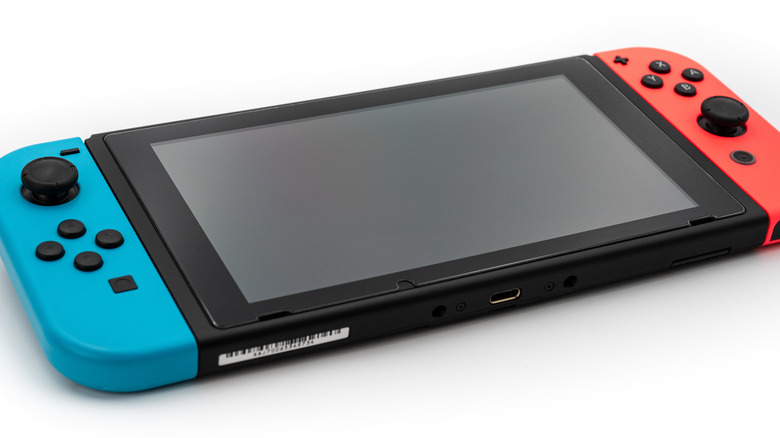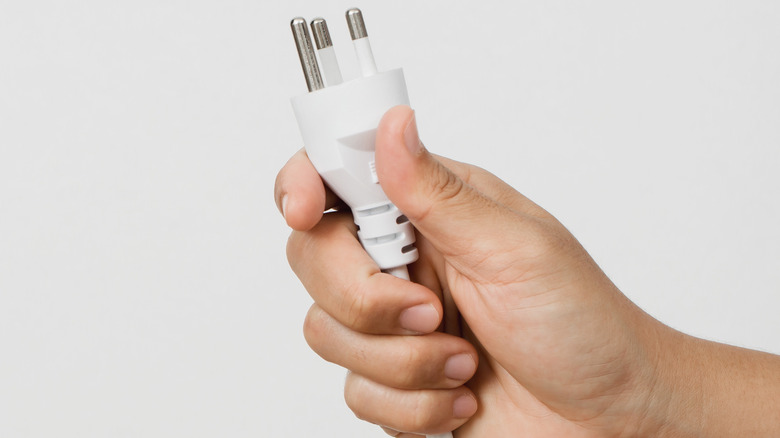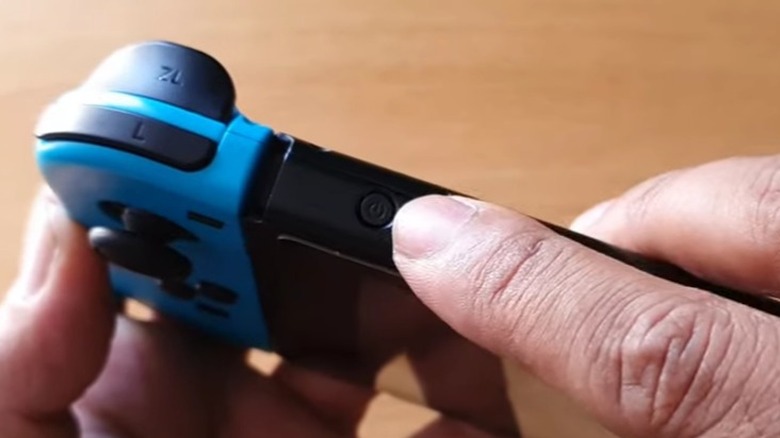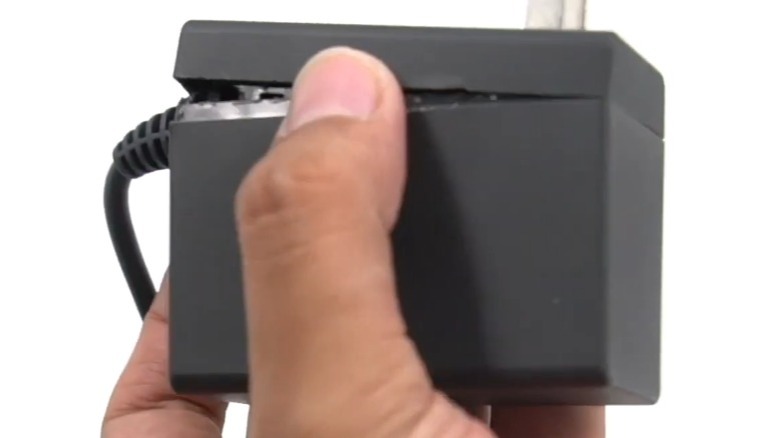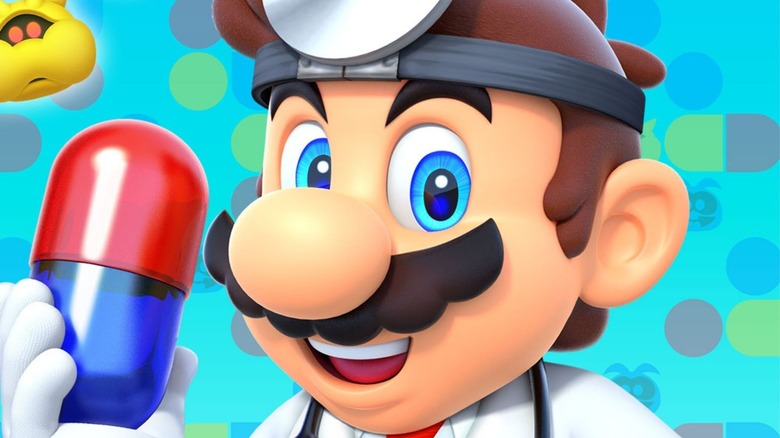Nintendo Switch Won't Turn On: Here's How To Fix It
We may receive a commission on purchases made from links.
The Nintendo Switch is generally considered a pretty reliable piece of hardware. It was designed to function as both a home console and a portable device, so Nintendo wanted to ensure it wasn't overly fragile. It had to make sure the console could withstand a bit of handling and continue functioning as intended. Still, that doesn't mean things can't go wrong – even for those who never take their console off the dock. In fact, several users have reported that their Switch suddenly would not power on. As it turns out, a few things can cause this, so users shouldn't panic and throw out their expensive gaming console without first trying a few tricks to fix it.
Of course, there might not be much hope if the Switch ended up in a bathtub or if it accidentally got left in the driveway behind a car, but those who attempted to boot up a game of "Super Smash Bros." only to find their beloved Switch unresponsive may have some recourse. There are a few things that gamers should try to bring the portable console back to life before accepting defeat. Here are some of the most common fixes.
Step 1: Reset the AC adaptor
Start by trying to turn on the Switch both in docked mode and in handheld while making sure to use the power button on the console. This is to ensure that the controller has not simply disconnected. If gamers confirm this isn't the issue, the next step is to check that it's getting power through the dock.
It could be that the Switch isn't charging, and a drained battery is all that's keeping it from turning on. According to Nintendo's official troubleshooting guide, the first thing users should do to troubleshoot this is reset their power adaptor. Power adaptors can shut down for a few reasons, but the main reason is to prevent a surge of electricity coming through the socket from damaging the device being powered. It's possible a safety mechanism in the adapter switched the passage of electricity off to protect the console, and now it needs to be reset.
To do this, unplug the adaptor from the wall and the dock, leaving it disconnected for a minimum of 30 seconds. If this happens repeatedly, it may be worth investing in a surge protector to ensure that other electrical surges do not damage the Switch in the future.
Step 2: Perform a hard reset
While the AC adaptor is resetting, Nintendo also suggests that it may be worthwhile to reset the Switch itself. A video game console is basically a tiny, extremely specialized computer, and – just like all computers – they are prone to all kinds of finicky errors when too many software processes pile up. These errors can result in freezing, strange bugs, downgraded performance, or even the console failing to boot properly.
In order to perform a hard reset, players need to press and hold the power button on the console for 20 seconds. They should then press the power button one more time when this is done. Assuming the Switch has a charge, this should be enough for it to turn on. If it doesn't turn on, plug the AC adaptor back into the dock, attempt to charge the device, and then try to turn it on again.
Step 3: Check the AC adaptor and dock for damage
The two steps above should resolve most software issues preventing the Switch from turning on. But if it's still failing to boot, it's possible a hardware issue is to blame (per Nintendo). First, users should ensure they are using the official Nintendo Switch AC adapter (model No. HAC-002), as third-party adapters may not work correctly. They should also check that the adapter isn't damaged at the prongs or the USB-C input and that the cable is fully intact. They may need a replacement if it's damaged since that is likely what is preventing power from reaching the Switch.
If the AC adaptor appears fine, players can try plugging it directly into the Switch without using the dock. If the console manages to charge like this, something may be happening inside the dock, preventing power from reaching the Switch. It will likely need to be replaced.
Of course, if none of these solutions resolves that issue even after trying another dock and power supply, then it's likely that something may have broken in the Switch itself. At this point, it's time to call Nintendo.
Step 4: Schedule a repair
The Nintendo Switch, Nintendo Switch Lite, and Nintendo Switch – OLED models come with a one-year limited warranty. If the Switch fails to function within this period, "Nintendo will repair or replace the defective hardware product or component, free of charge." Users can schedule a repair through Nintendo's customer support website or call the consumer assistance hotline at 1 (800) 255-3700. This would be the best option if none of the above steps worked, as the user taking any action to replace damaged parts themselves or through a non-Nintendo-certified shop will void an active warranty.
If the warranty no longer covers the user's Switch, they can still commission Nintendo to repair the console for a fee. Moreover, even if Nintendo cannot fix the console, it will offer to replace it with a Factory Certified System, which it claims "must meet functional new product specifications." Though these might have new housings or minor cosmetic defects, all repaired or replaced systems receive a new 100-day repair warranty — in case a similar failure happens again.
Users who are comfortable cracking their Switch open and prefer to attempt to repair it themselves can try replacing the battery, charge port, USB adaptor, or motherboard using the steps mapped out by IFIXIT. However, this is not a project for beginners, as there is a significant risk of further damaging the console.

